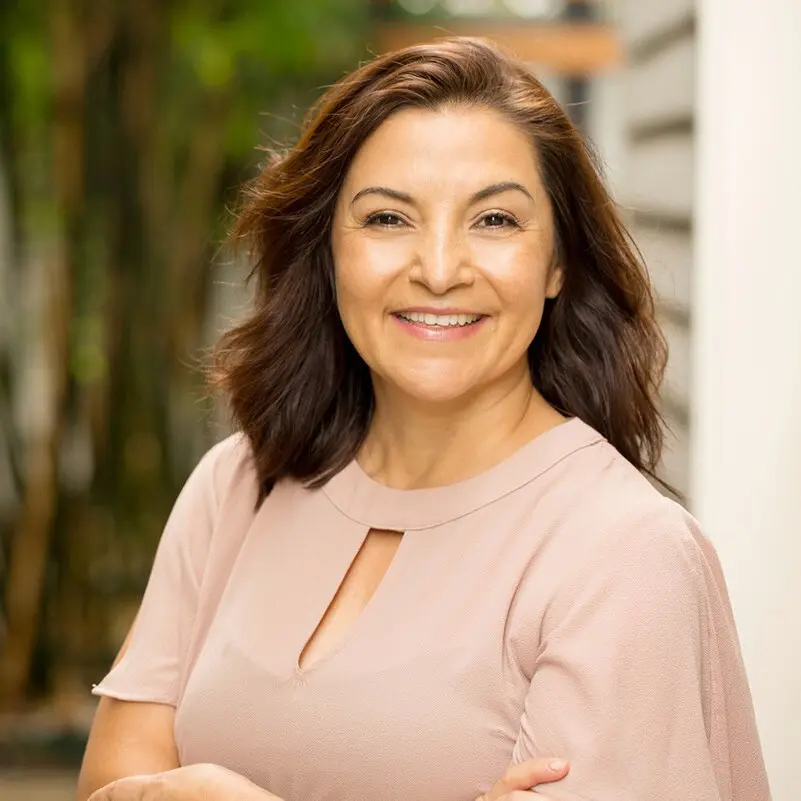Non-Ablative & Ablative Resurfacing
St. Louis Dermatology offers non-ablative and ablative laser resurfacing to treat wrinkles, scars, and sun damage. Contact us today for consultation.

Non-Ablative and Ablative Resurfacing
Laser resurfacing is a popular cosmetic procedure used to improve the appearance of the skin by treating wrinkles, scars, pigmentation, and other skin imperfections. There are two primary types of laser resurfacing treatments: ablative and non-ablative. Both are highly effective but work differently and have varying intensity levels, recovery times, and results.
What is Laser Resurfacing?
Laser resurfacing is a skin rejuvenation treatment that uses focused beams of light to remove damaged skin layers and stimulate the production of new collagen, leading to smoother, more youthful-looking skin. It can be used to address various skin concerns, including:
- Wrinkles and fine lines
- Acne scars
- Hyperpigmentation and sunspots
- Enlarged pores
- Uneven skin texture
- Surgical or trauma-related scars
There are two main types of laser resurfacing treatments: ablative and non-ablative. These treatments differ in how they interact with the skin and their level of invasiveness.
Ablative Laser Resurfacing
Ablative laser resurfacing is the more intensive of the two types. It removes the outer layers of damaged skin (the epidermis) while heating the underlying layers (the dermis) to stimulate collagen production. This process helps smooth the skin’s surface, reduce wrinkles, and improve skin texture.

Types of Ablative Lasers
- Carbon Dioxide (CO2) Lasers: CO2 lasers are powerful and can treat deeper wrinkles, scars, and severe sun damage. They work by vaporizing the top layers of skin, resulting in significant skin tightening and improvement in texture.
- Erbium YAG Lasers: These are slightly less aggressive than CO2 lasers and are ideal for treating moderate wrinkles, fine lines, and surface-level skin irregularities. Erbium lasers remove thinner layers of skin with less heat damage, leading to a shorter recovery time than CO2 lasers.
What to Expect During Ablative Resurfacing
- Procedure: The treatment typically requires local or general anesthesia, especially for more intense lasers like CO2. The laser is passed over the treatment area, removing thin layers of skin with each pass.
- Recovery: Ablative resurfacing requires a longer recovery than non-ablative options. You can expect about 1-2 weeks of downtime, during which your skin will appear red and swollen. New skin will gradually form over the treated area, resulting in a more youthful appearance.
- Results: Ablative resurfacing results are usually more dramatic and long-lasting than those from non-ablative treatments. After total healing, which can take a few months, patients typically notice smoother skin with fewer wrinkles and improved skin tone and texture.
Benefits of Ablative Resurfacing
- Provides significant results for deep wrinkles and scars.
- Tightens and smooths the skin by removing damaged layers.
- Stimulates collagen production for longer-lasting skin improvement.
- Ideal for individuals with severe sun damage, scarring, or deeper wrinkles.
Risks and Considerations
- Longer downtime and recovery period (up to 2 weeks).
- Potential for temporary redness, swelling, and crusting of the skin.
- Higher risk of side effects, such as infection or changes in skin pigmentation, especially for individuals with darker skin tones.

Non-Ablative Laser Resurfacing
Non-ablative laser resurfacing is a gentler, less invasive option. Instead of removing the top layer of skin, non-ablative lasers work by heating the deeper layers of the skin (the dermis) without harming the surface. This stimulates collagen production, leading to gradual skin tightening and improved texture.
Types of Non-Ablative Lasers
- Fractional Lasers: Fractional lasers (such as Fraxel) target only a fraction of the skin’s surface at a time, leaving the surrounding tissue intact. This speeds up the healing process while still delivering noticeable results. Depending on the intensity, fractional lasers can be either ablative or non-ablative.
- Pulsed Dye Lasers (PDL): PDLs treat vascular skin issues, such as redness, rosacea, or broken blood vessels, by targeting the blood vessels beneath the skin without damaging the surface.
- Lasers: These lasers penetrate deeper into the skin, treating pigmentation issues, vascular lesions, and skin tightening. Lasers are commonly used for non-ablative resurfacing.
What to Expect During Non-Ablative Resurfacing
- Procedure: Non-ablative resurfacing is typically performed with minimal discomfort. A topical anesthetic may be applied to reduce minor discomfort during the procedure. The laser is passed over the treatment area, targeting the deeper skin layers while leaving the surface intact.
- Recovery: Non-ablative treatments generally have little to no downtime. Patients may experience slight redness or swelling for a few hours or up to a few days, but these side effects typically resolve quickly.
- Results: Results are more subtle and develop gradually over several sessions. Multiple treatments (usually 3-6) are often recommended to achieve optimal results. Because non-ablative lasers stimulate collagen production over time, you will gradually notice skin texture and tone improvements.
Benefits of Non-Ablative Resurfacing
- Minimal to no downtime, making it ideal for patients with busy schedules.
- Gradual improvement in skin texture and tone.
- Fewer risks and side effects compared to ablative lasers.
- Suitable for individuals with mild to moderate skin concerns.
- Safe for a wider range of skin tones and types.
Risks and Considerations
- Results are less dramatic and immediate compared to ablative treatments.
- Multiple sessions are typically required for optimal results.
- It may not be as effective for severe wrinkles, deep scars, or significant sun damage.
Comparing Non-Ablative vs. Ablative Resurfacing
| Feature | Non-Ablative Resurfacing | Ablative Resurfacing |
|---|---|---|
| Invasiveness | Less invasive | More invasive |
| Recovery Time | Little to no downtime | 1-2 weeks of downtime |
| Treatment Sessions | Multiple sessions needed (3-6) | Typically, 1-2 sessions |
| Results | Gradual improvement | Immediate and more dramatic results |
| Targeted Concerns | Fine lines, mild acne scars, pigmentation | Deep wrinkles, severe scars, sun damage |
| Risks and Side Effects | Minimal risk | Higher risk of redness, infection, and pigmentation changes |
| Pain/Discomfort | Mild discomfort | Can require anesthesia due to higher intensity |
What to Expect After Laser Resurfacing
Ablative Aftercare:
- The skin will be red and swollen and may scab over as it heals.
- You must keep the area clean and moisturized to prevent infection.
- Avoid direct sun exposure and wear broad-spectrum sunscreen to protect the healing skin.
- Full recovery can take several weeks to months, with redness fading.
Non-Ablative Aftercare:
- Minor redness or swelling may occur but typically resolves within a few days.
- Use a gentle skincare routine to avoid irritation.
- Sunscreen is crucial to protect the skin from UV damage.
- Results will gradually improve over several weeks as collagen builds.
Risks and Side Effects
Ablative and non-ablative resurfacing carries some risks, although ablative treatments have a higher potential for complications. Common side effects for both include redness, swelling, and skin irritation. For ablative procedures, more serious risks include infection, scarring, and changes in pigmentation.
Who is a Good Candidate?
Ablative resurfacing is best suited for individuals with:
- Deeper wrinkles and fine lines.
- Severe acne scars.
- Sun damage or uneven skin texture.
- Those willing to commit to a more extended recovery period for dramatic results.
Non-ablative resurfacing is ideal for individuals with:
- Mild to moderate skin concerns.
- Fine lines, pigmentation issues, or early signs of aging.
- A busy lifestyle that doesn’t allow for extended downtime.
- A desire for gradual, subtle improvements with minimal risk.
Ready to Rejuvenate Your Skin?
St. Louis Dermatology & Cosmetic Surgery specializes in non-ablative and ablative laser resurfacing to help you achieve smoother, more youthful-looking skin. If you’re unsure which treatment is proper for you, our experienced dermatologists are here to guide you through every step of the process.
Schedule a consultation to discuss your skincare goals, explore your treatment options, and take the first step toward rejuvenating your skin. Whether you’re targeting fine lines, scars, or sun damage, we are here to help you achieve the radiant skin you deserve.
GET IN TOUCH

